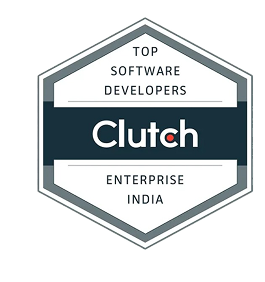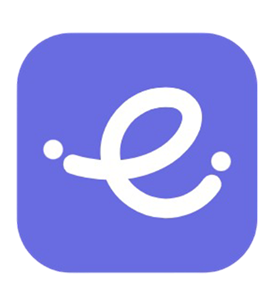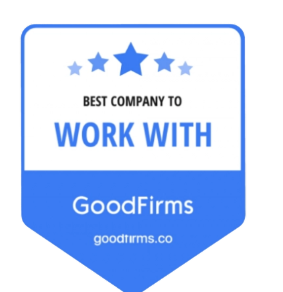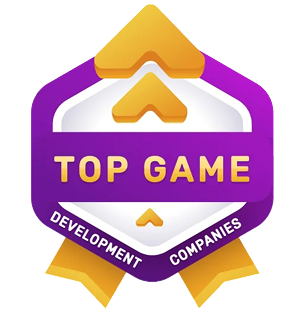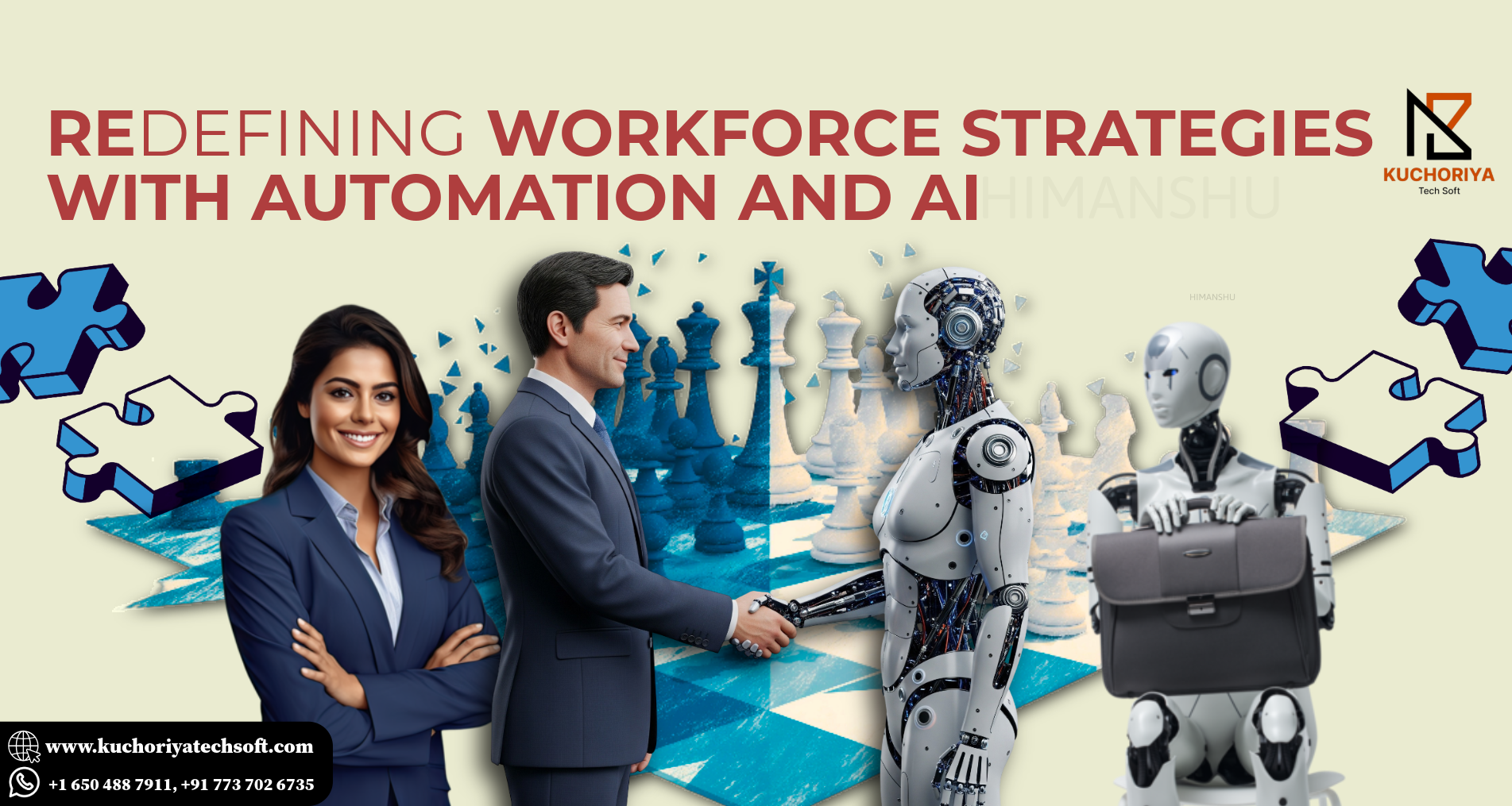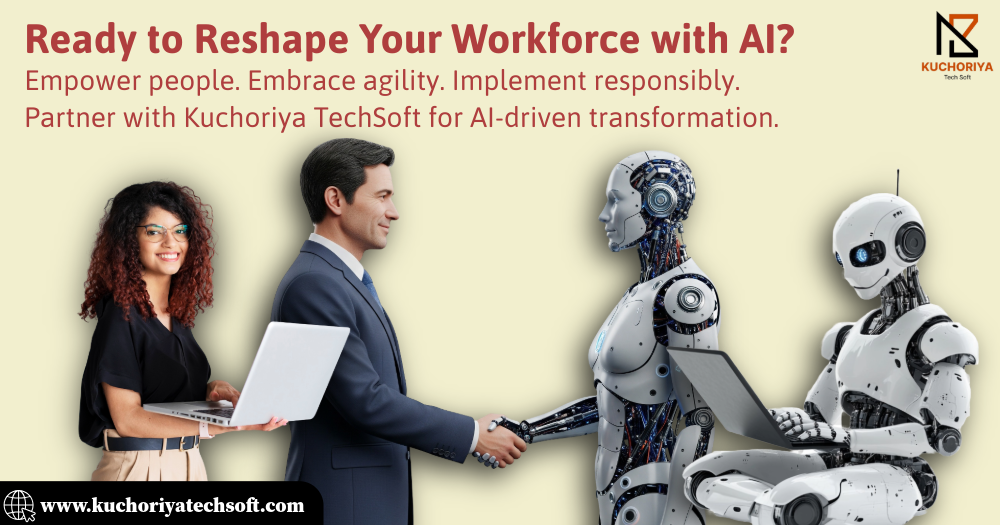In an era defined by rapid technological advancement, automation and AI are no longer abstract concepts but fundamental drivers reshaping global workforce strategies. This white paper, presented by Kuchoriya Techsoft, addresses the critical imperative for organizations to proactively redefine their approaches to talent management, organizational structure, and employee development to thrive in the future of work. We explore how human-AI collaboration can unlock unprecedented levels of productivity, foster innovation, and enhance employee engagement. By integrating AI responsibly, focusing on comprehensive reskilling and upskilling initiatives, and cultivating agile organizational cultures, businesses can navigate the complexities of digital transformation to achieve sustained competitive advantage. This document provides a strategic framework and practical roadmap for leaders to build a resilient, adaptable, and high-performing workforce ready for the AI-powered enterprise.
A. The Shifting Paradigm of Work
The landscape of work has consistently evolved throughout history, from the agrarian revolution to the industrial age and the digital era. Each phase introduced new tools, processes, and societal structures that fundamentally altered how we live and earn. Today, we stand at the precipice of another monumental shift, driven by the accelerating capabilities of automation and artificial intelligence (AI). These transformative forces are not merely incremental improvements; they represent a paradigm shift that demands a profound re-evaluation of established workforce strategies. Once confined to the realm of science fiction, AI and automation are now integral to everyday operations, from sophisticated data analytics and robotic process automation (RPA) to generative AI transforming creative industries. Their pervasive influence is compelling organizations worldwide to rethink every aspect of their human capital.
B. The Imperative for Redefinition
Traditional workforce strategies, often built on static job descriptions, linear career paths, and hierarchical structures, are rapidly becoming obsolete in an environment characterized by dynamic technological change. The advent of AI in business presents both immense opportunities and significant challenges. While AI promises enhanced efficiency, superior decision-making, and new revenue streams, inaction or a reactive approach carries substantial risks. Organizations that fail to embrace this redefinition risk falling behind competitors, suffering from critical skill gaps, diminished employee engagement, and ultimately, a decline in market relevance. The imperative for redefinition is clear: to remain competitive, foster sustainable growth, and retain top talent, businesses must strategically integrate automation and AI, evolving their workforce to work harmoniously alongside intelligent systems. This demands a proactive stance, moving beyond fear of job displacement to embracing the potential for human-AI augmentation and the creation of entirely new roles.
C. Purpose and Scope of the Whitepaper
This white paper aims to serve as a comprehensive guide for business leaders, HR professionals, and policymakers seeking to navigate the complexities of redefining workforce strategies in the age of automation and AI. Our primary objective is to provide a robust framework that enables organizations to transition from legacy models to future-ready ecosystems. Kuchoriya Techsoft believes that by proactively addressing these shifts, companies can unlock new potential for growth and innovation. We will delve into key areas, including:
- Understanding the current impacts of AI on work.
- Exploring core tenets of effective human-AI collaboration.
- Outlining practical strategies for reskilling and upskilling the existing workforce.
- Discussing the necessity of agile organizational structures and cultures.
- Addressing vital ethical considerations for responsible AI implementation.
By examining these critical facets, this white paper seeks to equip stakeholders with the knowledge and tools necessary to leverage automation strategically and AI not just for operational efficiency, but for fostering a more adaptable, innovative, and human-centric future of work.
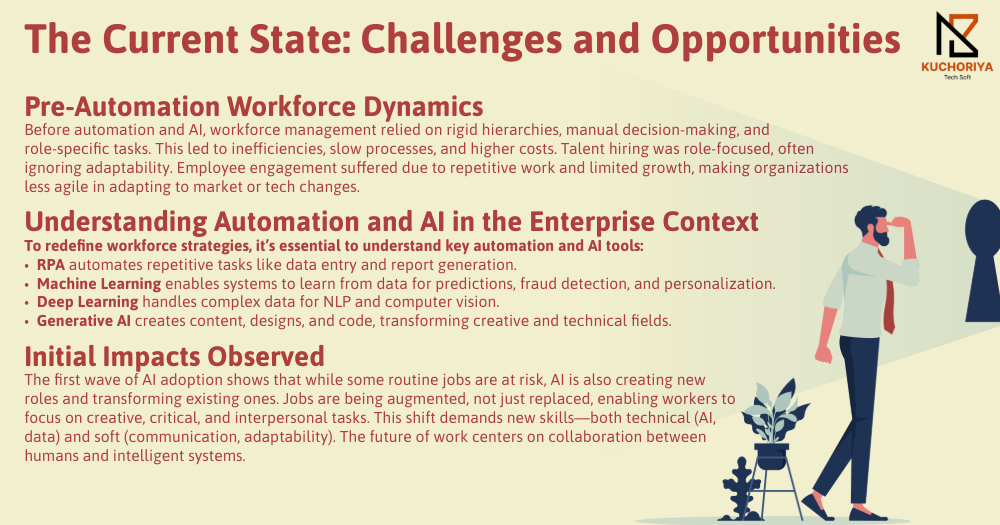
A. Pre-Automation Workforce Dynamics
Before the widespread integration of automation and AI, traditional workforce management often revolved around a set of established dynamics. Organizational structures were typically hierarchical, characterized by clearly defined roles, departmental silos, and rigid reporting lines. Decision-making processes could be lengthy, often relying on manual data analysis and human intuition. While these structures provided stability and clear accountability, they also presented inherent challenges. Efficiency bottlenecks were common in repetitive, rule-based tasks, leading to slower processing times and higher operational costs. Talent acquisition frequently focuses on finding candidates for pre-defined roles, sometimes overlooking the potential for cross-functional skills or adaptability. Furthermore, employee engagement could suffer from monotonous tasks, limited opportunities for skill development beyond immediate job functions, and a perceived lack of strategic contribution for those in administrative or routine roles. The emphasis was often on maintaining the status quo rather than continuous adaptation, making organizations vulnerable to rapid shifts in market demands or technological disruptions.
B. Understanding Automation and AI in the Enterprise Context
To effectively redefine workforce strategies, it's crucial to grasp the nuances of automation and AI within the enterprise.
- Robotic Process Automation (RPA) involves software robots that mimic human actions to automate repetitive, high-volume tasks across various applications. Examples include automating data entry, processing invoices, or generating reports in finance and HR.
- Machine learning (ML) empowers systems to learn from data without explicit programming, enabling predictive analytics, fraud detection, and personalized customer experiences. This is seen in customer service chatbots and predictive maintenance in operations.
- Deep learning is a subset of ML using neural networks to process complex data like images, audio, and text, driving advancements in natural language processing (NLP) and computer vision.
- Generative AI, a more recent frontier, can create new content, designs, code, and even realistic simulations, revolutionizing areas like content creation, product design, and software development.
These technologies are being applied across virtually every business function. In customer service, AI-powered chatbots and virtual assistants handle routine inquiries, freeing human agents for complex problem-solving. Finance departments leverage automation for reconciliation, auditing, and forecasting. HR functions use AI for talent acquisition (resume screening, candidate matching), onboarding, and even personalized learning recommendations. In operations, AI optimizes supply chains, manages inventory, and powers predictive maintenance, significantly enhancing efficiency and reducing downtime. Understanding these applications is the first step towards identifying how AI in business can augment human capabilities rather than simply replace them.
C. Initial Impacts Observed
The initial wave of AI adoption has provided valuable insights into its impact on the workforce. While anxieties around job displacement persist, particularly for highly routine tasks, evidence also points to significant job creation and transformation. New roles are emerging, such as AI trainers, data ethicists, robot maintenance technicians, and human-AI collaboration specialists. Many existing roles are undergoing job augmentation, where AI tools assist employees, allowing them to focus on higher-value activities requiring critical thinking, creativity, and interpersonal skills. For instance, a marketing analyst using AI to generate campaign ideas or a doctor leveraging AI for diagnostic support. This shift necessitates new skill requirements, emphasizing digital literacy, data interpretation, problem-solving, and adaptability. Organizations are observing an increasing demand for "soft skills" (e.g., emotional intelligence, communication) alongside "hard skills" related to AI and data. The initial impacts underscore a future where work is less about what people do and more about how they collaborate with intelligent systems.
The transition to an AI-augmented workforce demands a foundational shift in how organizations conceptualize, plan, and develop their human capital. This section outlines the core principles that underpin effective workforce transformation in the age of automation and AI.
A. Fostering a Human-AI Collaborative Ecosystem
The most successful workforce strategies will move beyond the outdated dichotomy of "human vs. machine" to embrace a synergistic "human with machine" paradigm. This involves designing work processes and roles where human strengths complement AI capabilities, creating a truly collaborative ecosystem. Human cognitive abilities—such as creativity, critical thinking, emotional intelligence, complex problem-solving, and strategic reasoning—are inherently difficult for current AI to replicate. Conversely, AI excels at data processing, pattern recognition, automation of repetitive tasks, and providing insights from vast datasets at scale.
Redefining roles involves identifying tasks that are best suited for automation and those that require human judgment, empathy, or ingenuity. For example, AI can automate customer service triage, allowing human agents to focus on complex, emotionally nuanced interactions. In data analysis, AI can process raw data and identify trends, while human analysts provide context, interpret findings, and devise actionable strategies. Strategies for designing synergistic workflows include:
- Task-level analysis: Breaking down jobs into individual tasks to determine which can be automated, augmented by AI, or remain exclusively human.
- Role redesign: Creating new hybrid roles (e.g., AI integration specialists, human-AI team leads) and redefining existing ones to emphasize human oversight, ethical governance, and complex decision-making.
- Cross-functional collaboration: Encouraging teams with diverse skill sets, including AI specialists, to work together to optimize processes and develop innovative solutions. This approach leverages the best of both worlds, driving superior productivity and fostering a dynamic work environment.
B. Strategic Workforce Planning in the Age of AI
Traditional workforce planning often projects needs based on historical trends. In an AI-driven world, strategic workforce planning must become predictive, agile, and forward-looking, anticipating future skill demands and organizational structures. This requires leveraging advanced analytics to understand the impact of emerging technologies. Key components include:
- Predictive analytics for future skill demands: Utilizing AI and data science to analyze market trends, technology roadmaps, and internal data to forecast which skills will be critical in 3-5 years. This moves beyond merely identifying current skill gaps to proactively addressing future needs.
- Scenario planning for different levels of AI integration: Developing multiple workforce scenarios based on varying rates and depths of AI adoption across different business units. This helps organizations prepare for various eventualities and build flexibility into their plans.
- Identifying "augmentation opportunities": Actively seeking out areas where AI can enhance human performance, making employees more effective and efficient, rather than simply replacing them. This could involve AI tools for research, content generation, data visualization, or process optimization.
- Talent mobility and redeployment: Creating internal marketplaces for skills and facilitating the movement of employees to new roles that leverage their augmented capabilities. Effective workforce planning in this context ensures that organizations build the necessary capabilities to adapt to continuous technological evolution.
C. Reskilling and Upskilling Initiatives
The rapid evolution of technology means that skills have a shorter shelf life than ever before. Therefore, reskilling and upskilling initiatives are not just beneficial but critical for ensuring workforce resilience and maintaining competitiveness.
- The critical importance of continuous learning: Organizations must instill a culture of lifelong learning, where employees are empowered and encouraged to constantly acquire new knowledge and abilities. This involves providing accessible learning platforms, time for training, and recognition for skill development.
- Developing AI literacy across the organization: It’s not just about technical AI specialists; every employee needs a basic understanding of what AI is, how it works, its potential, and its limitations. This general AI literacy fosters better collaboration with AI tools and reduces anxiety.
- Training programs for new roles and human-AI collaboration: Designing targeted training programs that address the specific skills required for emerging roles (e.g., prompt engineering for generative AI, ethical AI oversight) and for effective collaboration with AI systems. This includes training on new software, data interpretation, and human-machine interface best practices.
- Strategies for internal talent mobility and redeployment: Investing in internal talent pipelines by identifying employees whose roles might be augmented or transformed by AI and providing them with pathways to new, higher-value positions within the organization. This reduces external hiring costs and builds employee loyalty. Successful reskilling programs are proactive, personalized, and integrated into the daily workflow, making learning a continuous journey rather than a one-off event.
D. Agile Organizational Structures and Culture
The hierarchical, rigid structures of the past are ill-suited for the dynamic, AI-powered future. Agile organizational structures and a supportive culture are essential to harness the full potential of automation and AI.
- Transitioning from hierarchical to networked, fluid structures: Moving towards cross-functional teams, project-based work, and empowered autonomous units that can quickly adapt to new challenges and opportunities. This decentralizes decision-making and fosters faster innovation.
- Promoting a culture of experimentation, adaptability, and continuous improvement: Encouraging employees to embrace new technologies, learn from failures, and constantly seek ways to optimize processes and outcomes. This involves psychological safety, where employees feel comfortable taking calculated risks.
- Leadership's role in championing change and fostering psychological safety: Leaders must be the primary advocates for this transformation, communicating the vision clearly, modeling desired behaviors, and creating an environment where employees feel secure in adapting to new ways of working. This includes addressing fears and celebrating successes. An agile culture is characterized by transparency, trust, and a shared commitment to leveraging AI for business transformation.
E. Ethical Considerations and Responsible AI Implementation
As AI integration deepens, organizations must prioritize ethical AI principles to ensure fair, transparent, and accountable use of these powerful technologies. Neglecting ethical considerations can lead to significant reputational damage, legal liabilities, and erosion of employee trust.
- Addressing biases in AI systems: AI models can inherit and amplify biases present in their training data, leading to discriminatory outcomes in areas like hiring, performance evaluation, or customer service. Organizations must implement robust data governance, bias detection, and mitigation strategies.
- Ensuring fairness, transparency, and accountability: Developing clear guidelines for how AI systems make decisions, ensuring explainability where possible, and establishing mechanisms for human review and intervention, particularly in critical areas affecting individuals.
- Data privacy and security implications: AI systems often rely on vast amounts of data, necessitating stringent data protection measures, compliance with regulations (e.g., GDPR, CCPA), and robust cybersecurity protocols to prevent breaches.
- The role of human oversight in AI-driven decisions: Establishing clear lines of human accountability for AI outputs, especially in high-stakes scenarios. This means humans retain ultimate responsibility and oversight, even when AI provides recommendations or automates tasks. Responsible AI implementation builds trust with employees, customers, and stakeholders, positioning the organization as a leader in ethical innovation.

Successfully redefining workforce strategies with automation and AI is not a one-time project but a continuous journey. This section outlines a practical, phased roadmap for organizations to effectively implement this transformation, drawing on best practices for digital transformation and change management.
A. Assessment and Vision Setting
The initial phase involves a thorough understanding of the current state and a clear articulation of the desired future.
- Conducting a current state analysis (skills audit, process mapping): Begin by performing a detailed audit of existing workforce skills, identifying areas where skill gaps exist relative to future AI-driven demands. Simultaneously, map current business processes to pinpoint tasks that are repetitive, inefficient, or ripe for automation or AI augmentation. This provides a baseline for transformation. Kuchoriya Techsoft, for instance, might analyze its software development lifecycle or client support processes to identify automation opportunities.
- Defining a clear vision for the AI-augmented workforce: Based on the assessment, articulate a compelling and achievable vision for what the workforce will look like and how it will function in an AI-integrated environment. This vision should be shared across the organization and align with overall business objectives. For Kuchoriya Techsoft, this could be a vision of developers leveraging Generative AI for code generation and testing, freeing them for complex architectural design and innovative problem-solving.
B. Phased Implementation Approach
A gradual, iterative approach minimizes disruption and allows for learning and adaptation.
- Starting with pilot projects and scaling gradually: Identify specific, high-impact, low-risk areas for initial AI and automation pilot projects. These "quick wins" build momentum, demonstrate value, and allow the organization to learn from early experiences. Once successful, gradually scale these solutions to other departments or functions. For example, Kuchoriya Techsoft might start with automating routine IT support tickets or client data entry before moving to more complex AI applications.
- Identifying quick wins and high-impact areas: Prioritize automation initiatives that promise significant immediate returns, such as reducing manual errors, speeding up processes, or freeing up employee time for more strategic work. These successes serve as powerful internal case studies.
C. Technology Integration and Infrastructure
Successful AI adoption requires robust technological foundations.
- Choosing the right AI and automation tools: Select technologies that align with organizational needs, existing infrastructure, and long-term strategic goals. This might involve Robotic Process Automation (RPA) platforms, machine learning frameworks, generative AI tools, or a combination. Kuchoriya Techsoft would leverage its expertise to select and integrate cutting-edge AI platforms that seamlessly integrate with existing systems.
- Ensuring data readiness and interoperability: AI thrives on data. Organizations must ensure data quality, accessibility, and governance. This includes establishing secure data pipelines, standardizing data formats, and ensuring interoperability between different systems. Clean and well-structured data is fundamental for effective AI in business.
- Building robust and scalable IT infrastructure: Invest in scalable cloud infrastructure, secure data storage, and computing resources necessary to support AI initiatives. This foresight prevents bottlenecks as AI adoption grows.
D. Change Management and Employee Engagement
People are at the heart of any successful transformation. Effective change management is paramount to mitigate resistance and foster enthusiastic adoption.
- Effective communication strategies: Develop a transparent and consistent communication plan that articulates the "why," "what," and "how" of AI and automation integration. Address employee concerns, highlight the benefits (e.g., freeing up time for more creative work), and emphasize the organization's commitment to employee development.
- Addressing employee concerns and resistance: Proactively engage with employees through town halls, workshops, and direct feedback channels. Acknowledge fears about job displacement and provide clear pathways for reskilling and upskilling, demonstrating the organization's investment in their future roles.
- Involving employees in the design and implementation process: Empower employees to participate in designing new workflows and implementing AI tools. Their hands-on involvement fosters ownership, generates valuable insights, and increases buy-in.
- Recognizing and rewarding adaptation: Celebrate successes, acknowledge individuals and teams who embrace change, and reward skill acquisition and innovative approaches to human-AI collaboration.
E. Measuring Success and Iteration
Continuous improvement is vital in the dynamic world of AI and automation.
- Defining key performance indicators (KPIs) for workforce transformation: Establish clear metrics to track the success of workforce strategy changes. This could include productivity gains, reduction in manual errors, employee satisfaction scores related to new tools, skill gap closure rates, and the adoption rate of new technologies.
- Establishing feedback loops for continuous improvement: Implement regular reviews and feedback mechanisms to assess the impact of AI and automation on the workforce. Gather insights from employees on the ground, identify areas for improvement, and refine strategies.
- Adapting strategies based on outcomes: The workforce transformation roadmap should be iterative. Be prepared to adjust strategies, reallocate resources, and modify training programs based on performance data and evolving technological capabilities. This agile approach ensures long-term organizational resilience.
To illustrate the tangible benefits and practical application of these redefined workforce strategies, let's consider a hypothetical case study relevant to Kuchoriya Techsoft's domain:
Case Study: Automating Software Testing and Augmenting Developer Productivity at a Mid-Size Tech Company
- Challenge: A mid-size software development company, "InnovateDev Solutions," was struggling with lengthy software testing cycles, repetitive code review processes, and developer burnout due to manual tasks. This led to slower product releases and increased time-to-market.
- Solution Implemented: InnovateDev partnered with a firm (similar to Kuchoriya Techsoft) specializing in AI and automation solutions. They embarked on a phased implementation:
- Phase 1 (RPA for Test Automation): Implemented Robotic Process Automation to automate repetitive unit and integration test cases, freeing up QA engineers.
- Phase 2 (ML for Defect Prediction): Introduced machine learning models to analyze historical code and defect data, predicting potential bug-prone areas, allowing developers to focus their efforts more efficiently.
- Phase 3 (Generative AI for Code Augmentation): Deployed a custom Generative AI tool (developed with expertise like Kuchoriya Techsoft's) to assist developers with boilerplate code generation, syntax correction, and suggesting optimized algorithms.
- Workforce Redefinition & Reskilling:
- QA engineers were reskilled into "automation engineers" and "AI test strategists," focusing on designing robust automation frameworks and interpreting ML-driven defect insights.
- Developers were upskilled in prompt engineering and collaborative AI tools, learning how to effectively leverage generative AI for faster development.
- Leadership fostered an agile culture that encouraged experimentation with these new tools, emphasizing human-AI collaboration as a core principle.
- Results:
- Increased Productivity: Test cycle times reduced by 30%, and code generation speed for routine tasks improved by 25%.
- Enhanced Innovation: Developers, freed from mundane tasks, focused on complex problem-solving, leading to a 15% increase in innovative feature development.
- Improved Employee Engagement: QA and development teams reported higher job satisfaction, feeling more empowered and focused on strategic work, rather than repetitive chores.
- Cost Reduction: Significant operational cost savings were realized from reduced manual effort and faster time-to-market.
This case demonstrates how strategic AI and automation integration, coupled with proactive workforce reskilling and a commitment to agile methodologies, can drive significant improvements in productivity, innovation, and employee engagement, ultimately enhancing organizational resilience.
The journey of workforce transformation with automation and AI is continuous. Looking beyond current implementations, several emerging trends and ongoing shifts will further shape the future of work.
A. Emerging Trends and Technologies
- The Rise of Hyperautomation and Intelligent Automation: Beyond individual automated tasks, the future involves orchestrating multiple technologies (RPA, ML, NLP) to automate entire end-to-end business processes, creating highly efficient, self-optimizing systems. This "hyperautomation" will further redefine human roles towards oversight and strategic decision-making.
- The Proliferation of Specialized AI Agents: Expect to see increasingly sophisticated AI agents that can perform highly specialized tasks, acting as virtual assistants for executives, financial analysts, or even creative professionals. These agents will become integral members of human teams, requiring new collaboration protocols.
- Adaptive and Personalized Learning Ecosystems: AI will power more personalized and adaptive learning platforms, constantly analyzing individual skill gaps and career aspirations to recommend tailored reskilling and upskilling pathways. This will make continuous learning more effective and accessible.
- The Growth of the "Liquid Workforce" and AI-Enabled Gig Economy: Organizations will increasingly leverage a flexible, dynamic mix of full-time employees, contractors, and AI-driven platforms to access specialized skills on demand. AI will facilitate matching talent to projects, optimizing resource allocation.
B. Continuous Adaptation as the New Normal
The core takeaway for the future workforce is that continuous adaptation will no longer be an exception but the new normal. Organizations that thrive will be those that embrace fluidity and perpetual learning.
- The Need for Perpetual Learning and Organizational Agility: Companies must foster an inherent capacity for rapid learning and change at every level. This requires investing in robust learning infrastructures and promoting a mindset where continuous skill evolution is a fundamental expectation.
- The Evolving Role of HR as a Strategic Partner: HR will move beyond administrative tasks to become a strategic driver of workforce transformation. This includes leading reskilling initiatives, designing new organizational structures, managing human-AI collaboration, and ensuring ethical AI deployment. HR will be critical in cultivating an adaptive and resilient workforce.
C. Societal Implications and Policy Considerations
The profound shifts driven by automation and AI extend beyond individual organizations to impact society at large.
- The Broader Impact on Employment, Education, and Economic Stability: Policymakers must address the potential for widespread job displacement in certain sectors while fostering job creation in emerging fields. This requires re-evaluating educational curricula to prioritize future-ready skills and exploring new social safety nets.
- The Role of Governments and Educational Institutions: Governments have a critical role in shaping policies that encourage responsible AI development, protect workers' rights, and invest in public reskilling programs. Educational institutions must adapt their offerings to prepare students for the demands of the AI-augmented workforce, emphasizing skills like computational thinking, critical analysis, and ethical reasoning.
The imperative to redefine workforce strategies with automation and AI is undeniable. As this whitepaper from Kuchoriya Techsoft has demonstrated, the integration of these powerful technologies is not merely about efficiency gains; it's about fundamentally reshaping how work gets done, how talent is developed, and how organizations innovate and grow.
A. Recap of Key Insights
We have explored the shift from human-centric to human-AI collaborative ecosystems, emphasizing the unique strengths that each brings to the workplace. Effective strategic workforce planning now demands predictive analytics and scenario planning to address evolving skill demands. The critical importance of continuous reskilling and upskilling initiatives cannot be overstated, forming the bedrock of workforce resilience. Furthermore, embracing agile organizational structures and fostering a culture of adaptability are crucial for rapid response to change. Finally, a commitment to ethical AI implementation ensures that technological advancements serve human well-being and build trust.
B. Call to Action
For organizations navigating this transformative era, the time for proactive engagement is now. Kuchoriya Techsoft urges leaders to:
- Assess and Envision: Conduct a thorough audit of current capabilities and define a clear, inspiring vision for your AI-augmented workforce.
- Invest in Your People: Prioritize comprehensive reskilling and upskilling programs to empower your employees for new roles and human-AI collaboration.
- Embrace Agility: Foster flexible structures and a culture that champions experimentation, continuous learning, and adaptability.
- Implement Responsibly: Integrate AI with a strong commitment to ethical principles, ensuring fairness, transparency, and human oversight.
- Partner for Success: Consider collaborating with expert firms, like Kuchoriya Techsoft, who can provide guidance and solutions in AI integration, automation, and workforce transformation.
For more information and to discuss how Kuchoriya Techsoft can assist your organization in redefining its workforce strategies, please visit our website or contact us:
- Website: www.kuchoriyatechsoft.com
- Email: info@kuchoriyatechsoft.com
C. Final Thoughts
The future of work is not one where humans are replaced by machines, but rather one where human potential is amplified by intelligent tools. By strategically embracing automation and AI, organizations can create workplaces that are more productive, innovative, and ultimately, more human. The journey requires foresight, courage, and a commitment to continuous evolution, promising a future of unparalleled growth and opportunity.
